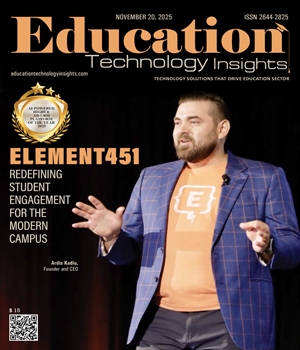THANK YOU FOR SUBSCRIBING
Be first to read the latest tech news, Industry Leader's Insights, and CIO interviews of medium and large enterprises exclusively from Education Technology Insights
Breaking the Silos & Unveiling the Complexities of User Experiences
Martin Bernier, Chief Information Officer, the University of Ottawa
 Martin Bernier, Chief Information Officer, the University of Ottawa
Martin Bernier, Chief Information Officer, the University of OttawaIn the realm of technology, we often discuss the user experience (UX) and its significance. But let's be honest: are we truly delivering on our promise of a seamless experience? The concept of "X" experiences has permeated various aspects of business, including customer experience (CX), employee experience (EX), and digital experience (DX) just to name a few. However, even before my first day at the institution five years ago, I found myself pondering how this applied to a community.
It is undeniably clear that the structure of our organization, not exclusive to our university but unfortunately prevalent in both the private and public sectors, poses significant challenges when it comes to thinking outside of our silos and delivering beyond virtual walls. Designing a harmonious end-to-end experience for students, professors, and support staff is an excruciatingly complex task, as it requires considering multiple elements from various administrative units. In fact, a single day's experience at the university may involve interactions with two, three, or even four different units.
Providing a consistent experience that aligns with the needs and expectations of individuals studying or teaching is easier said than done. To begin with, we must wholeheartedly embrace their different viewpoints, and prioritize their perspectives over our own. It is high time we acknowledge that people may have multiple experiences within our organization. For instance, how one perceives their job experience could significantly differ from how they view their employee experience. Similarly, a student's user experience may encompass completely different elements than their customer experience at the university.
This prompts an essential question: Who leads the orchestra to create a harmonious symphony of experiences for our university community? What would a blueprint look like if an architect were to construct the many experiences that define university life, considering the perspectives of professors, researchers, students, employees, alumni, and more?
“As the dynamics of university life shift between the campus and the home, and with many stakeholders now predominantly engaging in a digital-first experience, the mapping and improvement of IT experiences become not just important but critical.”
From an IT perspective, it is our duty to enhance the overall digital experience for all members of our community, regardless of their roles as students, customers, employees, or individuals juggling multiple hats. As the dynamics of university life shift between the campus and the home, and with many stakeholders now predominantly engaging in a digital-first experience, the mapping and improvement of IT experiences become not just important but critical. Dare we dream of alleviating pain points and making their journey more efficient, unified, and intuitive? How can we transcend the limitations of an IT-centric approach and think with a bold and audacious university-wide perspective? This requires extensive collaboration and partnerships, within and beyond our university's boundaries.
Connecting all these experiences, regardless of the preceding "X," contributes to the overall perception of the university. It encompasses more than a single sector or transaction; it requires unabashed agility and relentless collaboration on a significant scale.
Join me. It’s time. Embark on an audacious and transformative journey to forge a new path towards a future where every interaction is harmonized, and every user feels valued. Only then can we truly live up to the promise of an exceptional university experience.
Are you ready to break free from silos, and dismantle the barriers that hinder seamless experiences?
Read Also
Goldilocks Regulation
Beyond the Quiz: Redefining Competence in eLearning
Beyond Theory and Into Monday Morning: Enhancing Graduate Programs for Teachers
Safeguarding Students in the Age of Deepfakes: An Educational Imperative
Delivering Excellence in Education through Transformative School Leadership
Curriculum Innovation for Student Success and Institutional Growth

I agree We use cookies on this website to enhance your user experience. By clicking any link on this page you are giving your consent for us to set cookies. More info






















